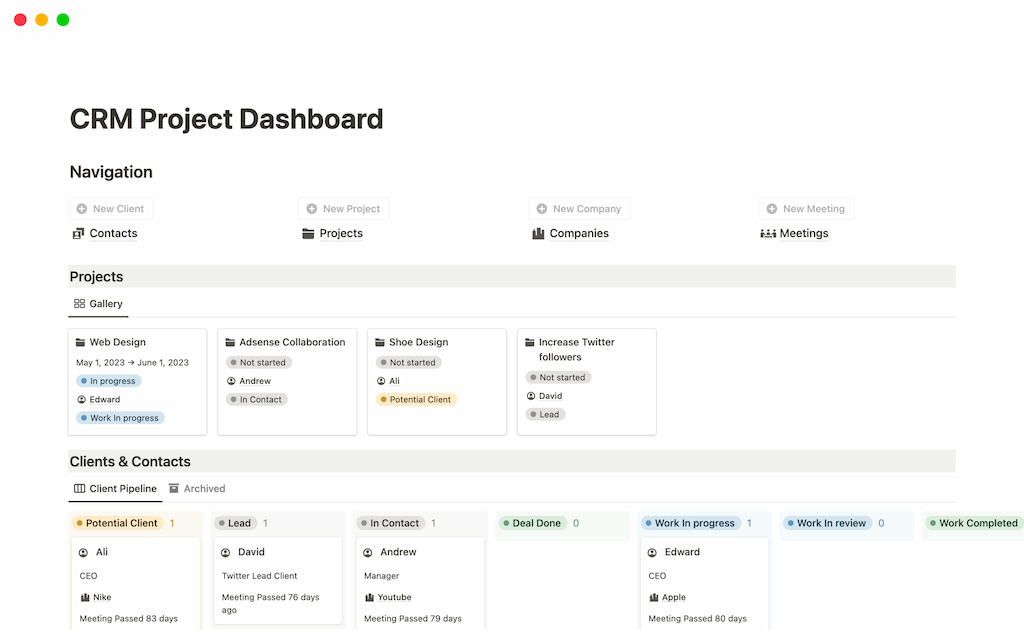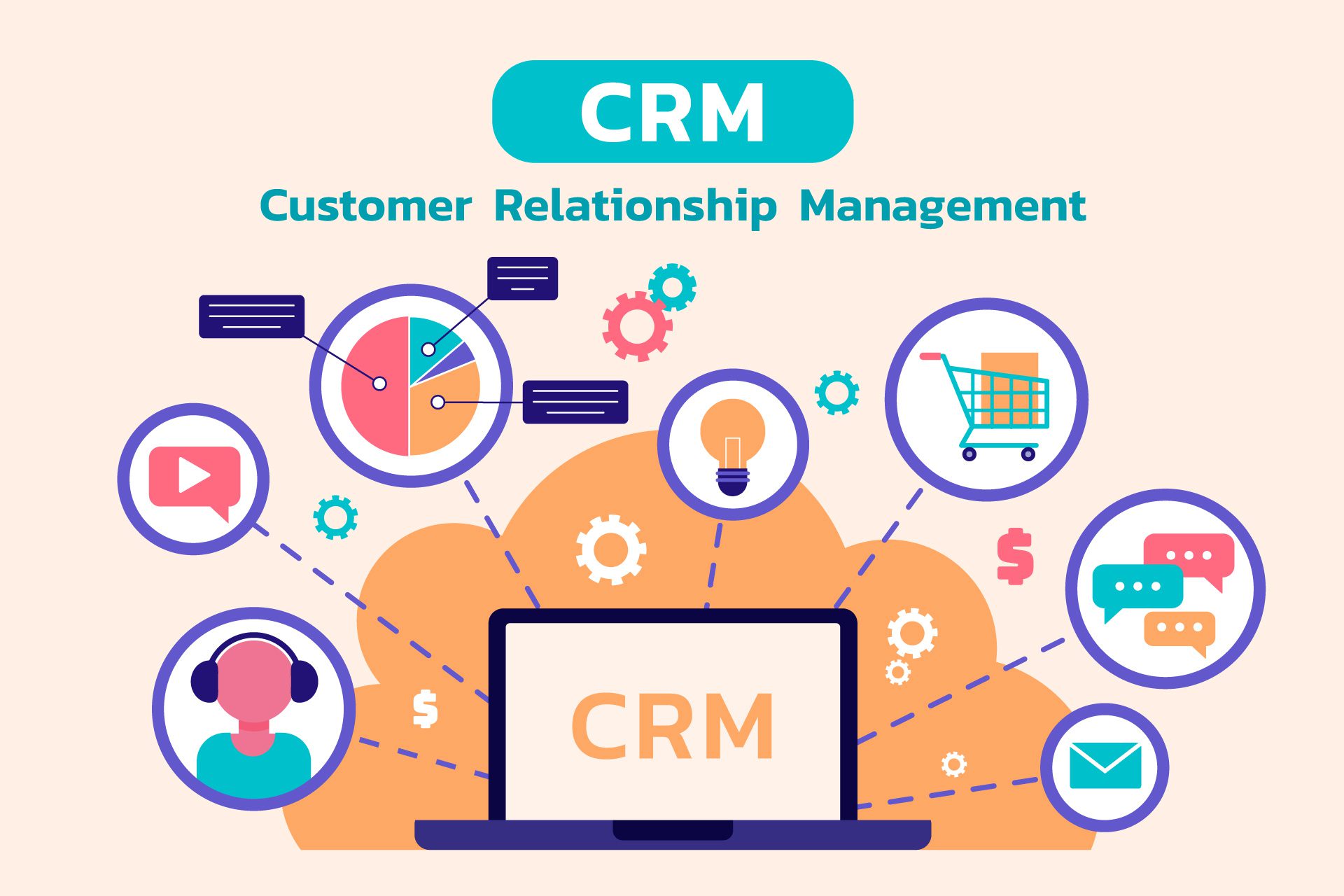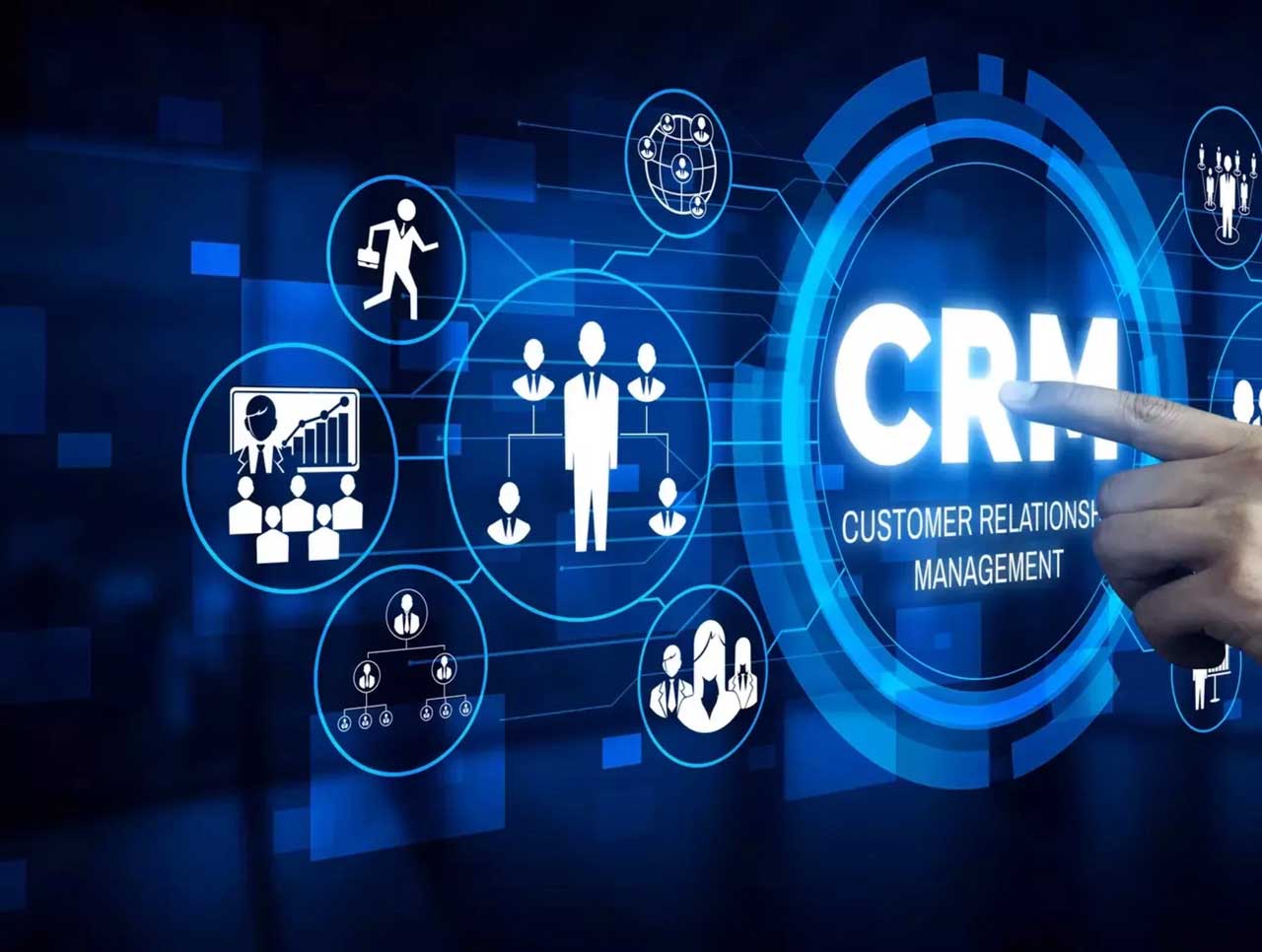
Unveiling the Power of Your CRM Marketing Dashboard: Why It Matters
In the dynamic realm of modern marketing, data is king. But raw data, in its unprocessed form, is like a treasure map without an X. You know there’s something valuable there, but you need the right tools to find it. That’s where your CRM marketing dashboard comes in. It’s the command center of your marketing operations, a visual interface that transforms complex data into actionable insights. Setting up a robust CRM marketing dashboard isn’t just a technical exercise; it’s a strategic imperative. It’s about empowering yourself to make data-driven decisions, optimize your campaigns, and ultimately, drive revenue growth.
This comprehensive guide will walk you through every step of the CRM marketing dashboard setup process. We’ll explore the ‘why’ and the ‘how,’ ensuring you not only understand the mechanics but also the strategic importance of each element. We’ll delve into the key metrics to track, the best practices for visualization, and the crucial integrations that will make your dashboard a true powerhouse. Get ready to transform your marketing from guesswork to a data-fueled engine of success.
Understanding the Core Components of a CRM Marketing Dashboard
Before we dive into the setup, let’s establish a solid foundation. A well-designed CRM marketing dashboard should encompass several core components. These elements work in concert to provide a holistic view of your marketing performance. Understanding these components is the first step towards building a dashboard that truly meets your needs.
1. Key Performance Indicators (KPIs)
KPIs are the heart of your dashboard. They are the measurable values that reflect the success of your marketing efforts. Choosing the right KPIs is crucial. They should align directly with your marketing goals. For example, if your goal is to increase lead generation, your KPIs might include the number of leads generated, the conversion rate of leads to opportunities, and the cost per lead. We will explore specific KPI examples in detail later in this guide.
2. Data Visualization
Data visualization is the art of presenting data in a clear and easily understandable format. This is where charts, graphs, and other visual elements come into play. A well-designed dashboard uses visuals to tell a story. Instead of staring at rows of numbers, you can quickly grasp trends, identify anomalies, and understand the overall performance of your campaigns. Think of it as turning complex data into a compelling narrative.
3. Data Sources and Integrations
Your CRM marketing dashboard is only as good as the data it receives. It needs to connect to various data sources, including your CRM system, email marketing platform, social media channels, website analytics, and advertising platforms. Integrations are the bridges that connect these sources. They allow data to flow seamlessly into your dashboard, providing a comprehensive view of your marketing ecosystem. Effective integrations are essential for accurate and up-to-date reporting.
4. Customization and Flexibility
One size does not fit all when it comes to dashboards. Your dashboard should be customizable to reflect your specific needs and priorities. It should allow you to tailor the displayed metrics, adjust the data ranges, and filter the information to focus on the most relevant insights. Flexibility is key. Your dashboard should be able to evolve as your marketing strategy changes.
Step-by-Step Guide to Setting Up Your CRM Marketing Dashboard
Now, let’s roll up our sleeves and get practical. Here’s a step-by-step guide to setting up your CRM marketing dashboard, covering the key stages from planning to implementation. We’ll break down each stage, providing practical tips and best practices to ensure your success.
Step 1: Define Your Marketing Goals and Objectives
Before you start building your dashboard, you need to know what you want to achieve. Your marketing goals and objectives will dictate the KPIs you track and the data you prioritize. Are you trying to increase brand awareness, generate more leads, improve customer retention, or boost sales? Each goal requires a different set of metrics. Take the time to clearly define your objectives. Write them down. Make them SMART: Specific, Measurable, Achievable, Relevant, and Time-bound. This clarity will guide your entire dashboard setup process.
Step 2: Identify Your Key Performance Indicators (KPIs)
Based on your marketing goals, identify the KPIs that will help you measure your progress. Here are some examples, categorized by common marketing objectives:
- Lead Generation:
- Number of leads generated
- Conversion rate of leads to opportunities
- Cost per lead (CPL)
- Lead source performance (e.g., website, social media, paid ads)
- Lead quality (e.g., lead score, demographics)
- Sales:
- Sales revenue
- Conversion rate (opportunities to deals)
- Average deal size
- Customer acquisition cost (CAC)
- Sales cycle length
- Customer Engagement and Retention:
- Customer lifetime value (CLTV)
- Customer churn rate
- Net Promoter Score (NPS)
- Customer satisfaction score (CSAT)
- Website engagement (e.g., bounce rate, time on site)
- Brand Awareness:
- Website traffic
- Social media engagement (e.g., likes, shares, comments)
- Brand mentions
- Reach and impressions
- Search engine rankings
Choose KPIs that are most relevant to your business and your marketing strategy. Don’t overwhelm yourself with too many metrics. Start with a core set and add more as needed. Remember, the goal is to gain actionable insights, not to create a data overload.
Step 3: Choose Your CRM and Dashboarding Tools
Your CRM system will be the central hub for much of your marketing data. Popular CRM platforms include Salesforce, HubSpot, Zoho CRM, and Microsoft Dynamics 365. Choose a CRM that aligns with your business size, industry, and marketing needs. The CRM you select will often influence your dashboarding tool choices.
Next, you’ll need a dashboarding tool to visualize and analyze your data. Some CRM systems have built-in dashboarding capabilities. Others integrate seamlessly with dedicated dashboarding platforms. Consider these options:
- CRM Built-in Dashboards: If your CRM offers robust dashboarding features, this can be the simplest and most cost-effective option.
- Dedicated Dashboarding Tools: Tools like Google Data Studio (now Looker Studio), Tableau, Power BI, and Klipfolio offer advanced visualization capabilities, data integration options, and customization features.
When choosing a tool, consider factors like ease of use, integration capabilities, data visualization options, and pricing. Make sure the tool can connect to all your data sources and that it aligns with your technical skills and budget.
Step 4: Connect Your Data Sources
This is where you establish the connections between your dashboarding tool and your various data sources. This process will vary depending on the tools you’ve chosen. Most dashboarding tools offer pre-built connectors for popular platforms like CRM systems, email marketing platforms, and social media channels. You’ll typically need to provide your login credentials to authorize the connection. Make sure to connect to all the data sources that feed information into the KPIs you’ve selected.
Data Source Integration Checklist:
- CRM System: Connect to your CRM to access lead data, sales data, and customer information.
- Email Marketing Platform: Integrate with your email marketing platform (e.g., Mailchimp, Constant Contact, Sendinblue) to track email campaign performance.
- Website Analytics: Connect to Google Analytics or another web analytics platform to monitor website traffic, user behavior, and conversion rates.
- Social Media Channels: Integrate with your social media platforms (e.g., Facebook, Twitter, LinkedIn) to track engagement metrics.
- Advertising Platforms: Connect to your advertising platforms (e.g., Google Ads, Facebook Ads) to monitor campaign performance and ROI.
Test the connections to ensure that data is flowing correctly. Verify that the data is accurate and up-to-date.
Step 5: Design Your Dashboard and Visualize Your Data
Now it’s time to bring your data to life. Your dashboard should be visually appealing, easy to understand, and tailored to your specific needs. Here are some best practices for designing an effective dashboard:
- Choose the Right Chart Types: Select the appropriate chart types to represent your data effectively.
- Line charts: Ideal for showing trends over time.
- Bar charts: Excellent for comparing different categories.
- Pie charts: Useful for showing proportions of a whole.
- Gauge charts: Display a single metric against a target value.
- Maps: Visualize geographic data.
- Use Clear and Concise Labels: Label your charts and axes clearly to ensure that anyone can understand the data.
- Keep it Simple: Avoid clutter. Focus on the most important information.
- Use Color Strategically: Use color to highlight key data points and trends.
- Prioritize Key Metrics: Place your most important KPIs at the top of the dashboard.
- Create Filters and Drill-Down Options: Allow users to filter the data by date range, campaign, or other relevant criteria. Provide drill-down options to explore the data in more detail.
- Consider Your Audience: Design your dashboard with your target audience in mind. Tailor the visuals and metrics to their needs and level of expertise.
Experiment with different layouts and visualizations until you find what works best for you. Regularly review and refine your dashboard to ensure it remains effective.
Step 6: Test and Refine Your Dashboard
Once you’ve built your dashboard, it’s time to test it. Check to see if the data is accurate and up-to-date. Ensure that the visualizations are clear and easy to understand. Get feedback from other team members. Ask them if they can easily find the information they need. Make any necessary adjustments based on their feedback. This iterative process of testing and refinement is crucial for creating a truly effective dashboard.
Testing Checklist:
- Data Accuracy: Verify that the data displayed in your dashboard matches the data in your source systems.
- Data Updates: Ensure that the data is updated regularly and in a timely manner.
- Visualization Clarity: Confirm that the charts and graphs are easy to understand.
- Usability: Test the dashboard’s navigation and filtering options.
- Performance: Check the dashboard’s loading speed.
- Feedback: Gather feedback from other team members and make adjustments based on their suggestions.
Regularly review and update your dashboard to ensure it remains relevant and effective. Your marketing landscape is constantly evolving, and your dashboard should evolve with it.
Step 7: Train Your Team and Promote Adoption
A dashboard is only as valuable as the people who use it. Train your team on how to use the dashboard and how to interpret the data. Explain the KPIs, the visualizations, and the insights they can glean from the dashboard. Promote the dashboard within your organization. Highlight its benefits and encourage its use. The more people who use the dashboard, the more value you’ll get from it.
Training Tips:
- Create a User Guide: Develop a user guide or documentation that explains the dashboard’s features and functionality.
- Offer Hands-on Training: Provide hands-on training sessions to walk users through the dashboard and answer their questions.
- Share Success Stories: Highlight examples of how the dashboard has helped improve marketing performance.
- Provide Ongoing Support: Make yourself available to answer questions and provide support as needed.
Encourage feedback and suggestions from your team to continuously improve the dashboard and its usefulness. Promote a data-driven culture within your organization.
Advanced Techniques and Considerations for Your CRM Marketing Dashboard
Once you’ve established the fundamentals, you can explore advanced techniques to enhance your CRM marketing dashboard and extract even more valuable insights.
1. Segmentation and Personalization
Segment your data to gain a deeper understanding of your customer base. Analyze the performance of different customer segments. This could be based on demographics, behavior, or purchase history. Use these insights to personalize your marketing efforts. Tailor your messaging, offers, and content to resonate with specific customer segments. This leads to increased engagement and conversion rates.
2. Predictive Analytics
Leverage predictive analytics to forecast future trends and outcomes. Use historical data to predict customer behavior, identify potential churn risks, and optimize your marketing spend. Predictive analytics can help you proactively address challenges and seize opportunities.
3. Integration with Marketing Automation
Integrate your CRM marketing dashboard with your marketing automation platform. This allows you to automate your marketing campaigns based on the insights you gain from the dashboard. For example, you can trigger automated email sequences based on customer behavior or lead scoring.
4. A/B Testing and Experimentation
Use your dashboard to track the results of A/B tests and other marketing experiments. Monitor the performance of different variations of your campaigns, landing pages, and offers. Use the data to identify what works best and optimize your marketing efforts accordingly. This iterative approach to testing and refinement will lead to continuous improvement.
5. Mobile Optimization
Ensure that your dashboard is accessible and optimized for mobile devices. More and more people are accessing information on the go. A mobile-optimized dashboard allows you to stay informed and make data-driven decisions wherever you are.
6. Data Security and Privacy
Protect your customer data by implementing robust security measures. Comply with data privacy regulations like GDPR and CCPA. Ensure that your dashboarding tools and integrations are secure. Regularly review your security protocols to protect your data from unauthorized access.
Common Challenges and How to Overcome Them
Setting up and maintaining a CRM marketing dashboard can present some challenges. Here are some common obstacles and how to overcome them.
1. Data Quality Issues
Data quality is paramount. Inaccurate or incomplete data will lead to flawed insights and poor decision-making. To overcome this, implement data validation rules, conduct regular data audits, and train your team on data entry best practices. Invest in data cleansing tools to identify and correct errors.
2. Integration Complexity
Integrating multiple data sources can be complex. Choose tools that offer robust integration capabilities and provide clear documentation. Work with your IT team to ensure that the integrations are set up correctly. Test the integrations thoroughly to ensure that data is flowing smoothly.
3. Lack of User Adoption
If your team doesn’t use the dashboard, it won’t deliver value. To promote user adoption, provide comprehensive training, create a user-friendly interface, and highlight the dashboard’s benefits. Encourage feedback and make improvements based on user suggestions.
4. Overwhelming Information
Too much data can be as bad as too little. Avoid overwhelming your users with too many metrics. Focus on the most important KPIs and use clear and concise visualizations. Create different dashboards for different audiences, tailoring the information to their specific needs.
5. Keeping Up with Changes
The marketing landscape is constantly evolving. Your dashboard needs to evolve with it. Regularly review your KPIs, data sources, and visualizations. Update your dashboard to reflect changes in your marketing strategy and the latest industry trends. Stay informed about new technologies and tools that can enhance your dashboard’s capabilities.
The Long-Term Benefits of a Well-Set-Up CRM Marketing Dashboard
Investing in a well-set-up CRM marketing dashboard is a strategic decision that offers significant long-term benefits. It’s not just about tracking metrics; it’s about transforming your entire marketing approach.
- Improved Decision-Making: A data-driven approach leads to better decisions. You’ll be able to make informed choices based on real-time insights, rather than relying on guesswork.
- Increased Marketing ROI: By optimizing your campaigns and targeting the right customers, you can maximize your marketing ROI and drive revenue growth.
- Enhanced Customer Understanding: Gain a deeper understanding of your customers’ needs and preferences. This will allow you to personalize your marketing efforts and improve customer satisfaction.
- Increased Efficiency: Automate tasks, streamline workflows, and eliminate manual processes. This will free up your team’s time and allow them to focus on more strategic initiatives.
- Competitive Advantage: In today’s competitive market, data is a key differentiator. A well-designed dashboard gives you a competitive edge by providing you with the insights you need to stay ahead of the curve.
- Improved Collaboration: A shared dashboard promotes collaboration and alignment across your marketing team. Everyone will be working from the same data, leading to more effective communication and coordination.
- Scalability: Your dashboard can scale with your business. As your business grows, your dashboard can adapt to track new metrics and integrate with new data sources.
The benefits extend beyond the immediate. A well-maintained dashboard becomes a valuable asset, providing a historical record of your marketing performance and enabling continuous improvement. It empowers you to become a more agile, responsive, and data-driven marketing organization.
Conclusion: Embrace the Power of Data with Your CRM Marketing Dashboard
Setting up a CRM marketing dashboard is an investment in your marketing success. It’s a journey, not a destination. It requires careful planning, execution, and ongoing refinement. But the rewards are substantial. By embracing the power of data, you can transform your marketing from a cost center into a revenue-generating engine.
This guide has provided you with the knowledge and tools you need to get started. Remember to define your goals, choose the right tools, connect your data sources, design clear visualizations, and train your team. Don’t be afraid to experiment, iterate, and continuously improve your dashboard. With a well-designed and maintained CRM marketing dashboard, you’ll be well-equipped to navigate the complexities of the modern marketing landscape and achieve your business objectives.
So, take the first step. Start planning your CRM marketing dashboard today. The future of your marketing is in your hands.


